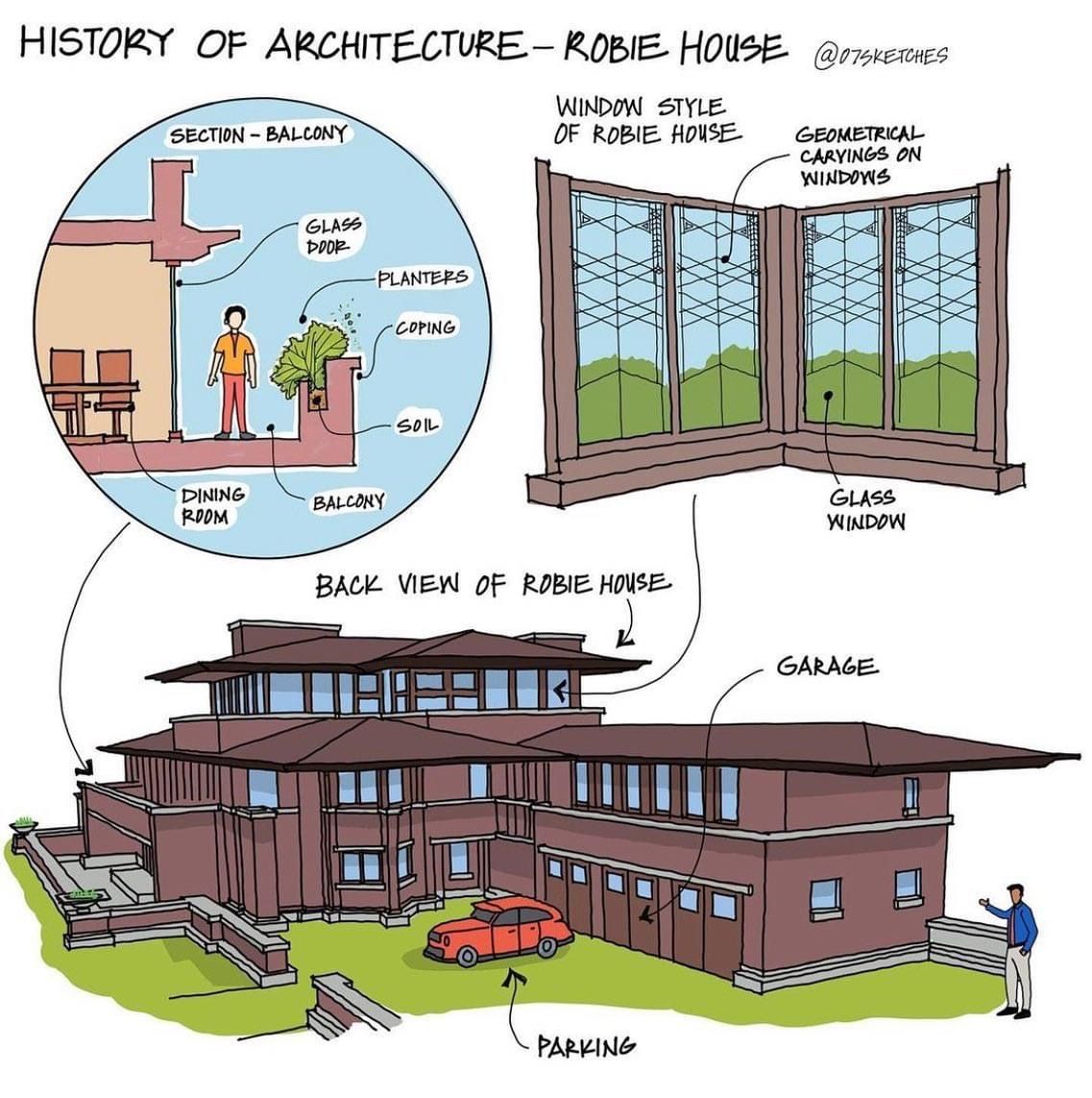In the quiet neighborhood of Hyde Park, Chicago, stands a building that forever altered the course of American architecture—the Robie House, designed in 1909 by the legendary architect Frank Lloyd Wright. Known as the finest example of the Prairie School style, the Robie House represents Wright’s philosophy of creating spaces that harmonize with their environment while serving modern family needs.
🌿 The Prairie School Vision
Frank Lloyd Wright sought to break away from European traditions that dominated American homes in the early 20th century. Instead of Gothic arches or Victorian ornamentation, he envisioned a uniquely American style inspired by the vast flat landscapes of the Midwest prairies.
The Robie House embodies this philosophy with its long horizontal rooflines, cantilevered terraces, and open floor plans. It does not dominate the land—it blends into it.
🏛️ Architectural Features of the Robie House
The Robie House showcases several design innovations, many of which influenced modern architecture for decades:
- Horizontal Emphasis: The flat, overhanging roofs and extended terraces emphasize the prairie horizon.
- Glass Windows with Geometric Patterns: Wright’s signature stained-glass windows allow natural light while maintaining privacy. The designs use abstract geometric patterns inspired by nature.
- Balcony and Planters: Integrated planters in balconies blur the boundary between indoors and outdoors, reinforcing Wright’s vision of organic architecture.
- Garage and Parking: Unlike most homes of its time, the Robie House featured a dedicated garage, reflecting the rise of the automobile age.
- Open Floor Plan: The interior avoided small, enclosed rooms, instead creating flowing spaces that encouraged family togetherness.
🖼️ Artistic Detailing
Beyond structural innovations, Wright infused artistry into every detail of the Robie House.
- Geometrical Carvings on Windows create a rhythmic play of light and shadow.
- Glass Doors and Windows connect the dining and living rooms with terraces, ensuring fluid interaction between spaces.
- Custom Furniture and Decor were originally designed by Wright himself, making the house a total work of art, not just a building.
🚗 Ahead of Its Time
One of the groundbreaking aspects of the Robie House was its integration of parking and garages, unusual in the early 1900s when automobiles were just gaining popularity. This foresight made the home not just beautiful but also practical for modern living.
📜 Historical Significance
Commissioned by Frederick C. Robie, a wealthy businessman, the house was completed in 1910. However, financial difficulties forced Robie to sell the property soon after. Over the years, the house narrowly escaped demolition several times, but preservationists and architectural institutions fought to protect it.
In 1963, the Robie House was declared a National Historic Landmark, cementing its place in architectural history.
🌍 Global Influence
Wright’s Robie House became a template for modern architecture, inspiring residential design worldwide. Its open-plan interiors, functional layouts, and integration with nature influenced the development of both mid-century modernism and contemporary architecture.
Even today, architects reference the Robie House when discussing sustainability, organic design, and human-centered living spaces.
🎭 Living Legacy
Now operated by the Frank Lloyd Wright Trust, the Robie House is open to the public as a museum. Visitors experience firsthand how Wright revolutionized the concept of home—from the way sunlight filters through stained glass to the seamless transition between indoors and outdoors.
For students, designers, and travelers, the Robie House remains not just a landmark but a living lesson in architectural innovation.
🌟 Conclusion
The Robie House is far more than an early 20th-century mansion; it is a symbol of architectural freedom and modern living. Frank Lloyd Wright’s ability to merge artistry with functionality transformed the humble American home into a global architectural icon.
More than a century later, the Robie House continues to inspire, reminding us that true design is not just about structures, but about creating harmony between people, place, and nature.
